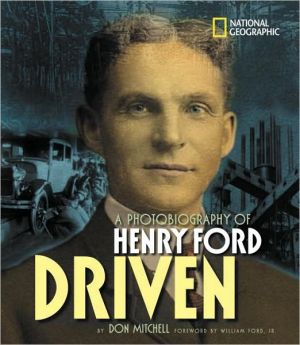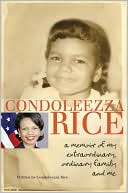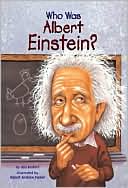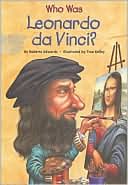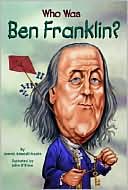Driven: A Photobiography of Henry Ford
Driven: A Photobiography of Henry Ford is a riveting profile of the man whose invention revolutionized American life: the industrial visionary who changed the automobile from rich man’s toy into affordable necessity. Don Mitchell weaves archival images from the Benson Ford Research Center with quotes from Ford’s writings, speeches, and interviews to create a lively, comprehensive profile of this intriguing individual.\ Fiercely independent, and a man of complex contradictions, Henry Ford is...
Search in google:
Driven: A Photobiography of Henry Ford is a riveting profile of the man whose invention revolutionized American life: the industrial visionary who changed the automobile from rich man’s toy into affordable necessity. Don Mitchell weaves archival images from the Benson Ford Research Center with quotes from Ford’s writings, speeches, and interviews to create a lively, comprehensive profile of this intriguing individual.Fiercely independent, and a man of complex contradictions, Henry Ford is revealed above all as a man driven to achieve his dream of building "a motor car for the great multitude," accessible to all. Driven includes a time line, resource list, and index.Children's LiteratureHenry Ford was a complicated individual and thankfully, this book showcases both the good and the bad. The book opens with a young Henry who loves to tinker with toys and clocks. It then discusses his fascination with motors, electricity, and making cars and farming equipment that are more efficient and safe. His development and expansion of Ford Motor Company is described in great detail. The inconsistencies in his beliefs are then explained. Ford was a pioneer of sorts, giving workers a good wage, shorter working days, and shorter weeks. He even hired people with disabilities, minorities, women, and former convicts. He did all of these things because he believed they were morally right; however, when the government and unions decided to make these privileges law, he fought the unions and even ignored violence between his employees and labor unions. His relationship with his family was good until he gave up control of his company; then it became forced and difficult. Ultimately, Ford started a wave of advancement that he could not control and with which he felt at odds.. This biography is unfortunately one long narrative that could have been broken up for easier browsing. The pictures add quite a bit to the text, but since it is a photobiography, there could have been more photos. Children will be surprised by some of the things that they learn about Ford, but seeing both sides makes him a much more interesting figure. Reviewer: Tiffany Erickson
\ VOYA - Cynthia Grady\ Like so many of the photobiographies in the National Geographic series, Driven: A Photobiography of Henry Ford does not disappoint. It opens with a quotation by Henry Ford about his dream to build an affordable automobile for "the great multitude" of American workers. In the foreword, Lee Iacocca, former president of Ford Motor Company and designer of the Mustang, among other cars, gives an overview of Henry Ford's genius and his mark on history. Nearly every page contains arresting blue-gray tinged photographs with informative, interesting captions and quotations. The chronological text begins with Henry Ford's older siblings lamenting the fact that their younger brother will take apart their toys if they don't guard them safely. Ford is depicted as an intelligent, "driven" man with a vision that would change the course of history, labor, and society. His complexity as a visionary is revealed when his ambitious work to improve labor practices and education, along with his pacifism, is juxtaposed with his anti-Semitic stand during the 1920s, his condoned violence toward labor union organizers, and his company's production of tanks, cargo trucks, and aircraft engines after the United States entered World War II. Source notes, a bibliography, Web sites, and a chronology all make this book useful for research, albeit short at sixty-four pages. It reads as a fascinating narrative for those who love a biography. Reviewer: Cynthia Grady\ \ \ \ \ Children's Literature - Tiffany Erickson\ Henry Ford was a complicated individual and thankfully, this book showcases both the good and the bad. The book opens with a young Henry who loves to tinker with toys and clocks. It then discusses his fascination with motors, electricity, and making cars and farming equipment that are more efficient and safe. His development and expansion of Ford Motor Company is described in great detail. The inconsistencies in his beliefs are then explained. Ford was a pioneer of sorts, giving workers a good wage, shorter working days, and shorter weeks. He even hired people with disabilities, minorities, women, and former convicts. He did all of these things because he believed they were morally right; however, when the government and unions decided to make these privileges law, he fought the unions and even ignored violence between his employees and labor unions. His relationship with his family was good until he gave up control of his company; then it became forced and difficult. Ultimately, Ford started a wave of advancement that he could not control and with which he felt at odds.. This biography is unfortunately one long narrative that could have been broken up for easier browsing. The pictures add quite a bit to the text, but since it is a photobiography, there could have been more photos. Children will be surprised by some of the things that they learn about Ford, but seeing both sides makes him a much more interesting figure. Reviewer: Tiffany Erickson\ \ \ Kirkus ReviewsThis well-rounded portrait depicts Ford as a complex, contradictory figure embodying qualities that are equally admirable and loathsome. His relentless pursuit of his vision resulted in the Model T, transforming the automobile from luxury item to something affordable for average Americans. The narrative lays it out: Ford's innovative workplace practices included doubling the average wage of automotive-industry workers, reducing the workweek from six days to five and setting new standards for factory safety. Ford was pioneering in his willingness to hire African-Americans, ex-convicts, women, the physically disabled and mentally ill. The undoing of his reputation was largely self-inflicted. He purchased a newspaper to publish anti-Semitic propaganda and distributed it through Ford dealerships. Mitchell vaguely speculates on the roots of Ford's anti-Semitism and does not mention that Hitler was a great admirer. Adamant opposition to labor unions further tarnished Ford's reputation as a champion of the common man, though the author's essential fondness for his subject shines through even here. An ample selection of well-captioned photographs, maps and archival material breaks up the text and demonstrates the tremendous impact of the Ford Motor Company. (chronology, bibliography, index) (Biography. 10-14)\ \ \ \ \ School Library JournalGr 5–8—Starting with a foreword by Lee Iacocca, Mitchell introduces readers to the founder of the auto company. As evidenced by the abundant period photographs, Ford cut a dapper figure. This biography covers his entire life, career, vision, ideals, character flaws, and lasting achievements. Thoughts, feelings, and quotes abound, and they are well sourced. Obviously the pictures are a huge draw here. Ford is portrayed as a complex individual—a mostly decent man, a pacifist, someone with an interest in education who wanted to help the less fortunate. Yet his hatred of Jews is evident, and he turned a blind eye to violence against those who attempted to form unions. Finally, he destroyed his relationship with his only son, Edsel. The writing is clear, and the organization is chronological. Pat McCarthy's Henry Ford: Building Cars for Everyone (Enslow, 2002) covers similar ground, but has far fewer illustrations. Driven combines fine photography and an inviting text to depict Ford's life and his impact on the world.—Anne Chapman Callaghan, Racine Public Library, WI\ \
